How to Spot and Fix Iron Deficiency in Cannabis Plants
- Why Is Iron Crucial for Cannabis Plants?
- Signs That Your Marijuana Plant Is Deficient in Iron
- Causes of Iron Deficiency in Weed Plants
- Other Problems Commonly Mistaken for Iron Deficiency
- How to Deal with Iron Deficiency
- How Long Does It Take a Plant to Recover from Iron Deficiency?
- How to Prevent Iron Deficiency
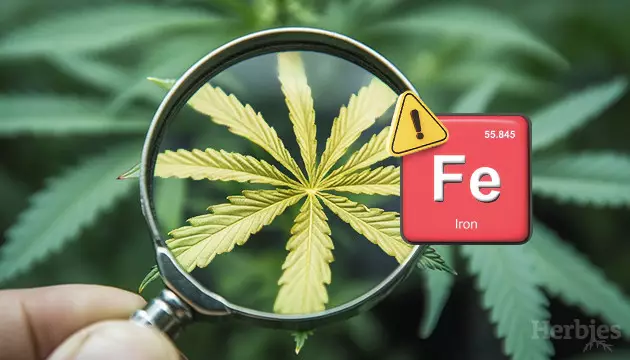
Unlike some other nutrient deficiencies, iron deficiency in cannabis plants is one of those hidden challenges that can catch even seasoned growers off guard. It's not the easiest issue to detect, but once you do, addressing it becomes straightforward. Here's a detailed guide to help growers spot, treat, and prevent the issue.
Why Is Iron Crucial for Cannabis Plants?
Iron is indispensable for the photosynthesis process and the creation of chlorophyll, the compound responsible for the green color of cannabis leaves. Without enough iron, the plant struggles to produce chlorophyll, leading to pale, yellow, or even white leaves – a condition called chlorosis. However, chlorophyll is more than just a pigment; it plays a critical role in the plant's ability to absorb light, which fuels the energy it needs to grow and thrive. A lack of iron undermines this process, which directly affects the overall health of the cannabis plant.
Iron is also crucial for other biochemical processes, such as enzyme functions and the metabolism of nitrogen and proteins. Though it is a micronutrient, meaning it's needed in smaller amounts compared to macronutrients like nitrogen, phosphorus, and potassium, its importance is undeniable.
Signs That Your Marijuana Plant Is Deficient in Iron
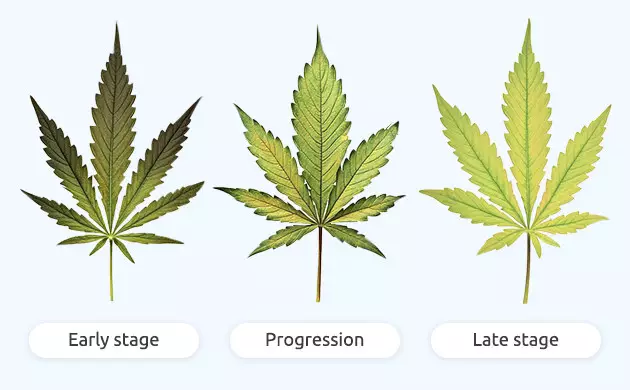
Spotting iron deficiency can be tricky, as its symptoms often overlap with other nutrient imbalances, such as calcium and magnesium shortages, making accurate diagnosis challenging, especially for beginners.
The most telltale sign is the yellowing of new leaves at the top of the plant. This symptom is different from nitrogen or magnesium deficiencies, which usually affect the lower, older leaves first. When iron is lacking, the veins of the younger leaves remain green while the tissue between them turns yellow. This happens because iron is an immobile nutrient – it can't be moved from older to younger leaves when the plant is running low. If left untreated, the yellowing will spread, and the plant’s growth will gradually slow down.
Other iron deficiency symptoms include thin, weak new branches, shortened spaces between new sets of leaves, and slow growth. It’s important to address these symptoms quickly, as a prolonged iron deficiency can severely impact your plant's yield and quality.
Causes of Iron Deficiency in Weed Plants
The primary reason cannabis plants become iron deficient is that iron is not readily available in the growing medium. This is often linked to improper pH levels or substrates that naturally lack sufficient iron. Cannabis plants absorb iron most efficiently when the pH of the medium is between 6.0 and 6.5. If the pH is too high – particularly above 7 in soil – iron becomes unavailable to the plant, even if it's present in the medium.
In traditional soil-based growing, cannabis iron deficiency is less common because soils typically contain enough iron. However, poor drainage, waterlogged conditions, or high salt content can lock iron out of the plant's reach.
Iron deficiencies are more prevalent in hydroponic systems and coco. Hydro setups often use filtered or reverse osmosis (RO) water, which is stripped of many essential minerals, including iron. Without the right supplements, plants can quickly become iron deficient.
Coco coir is another popular medium that can bind with nutrients from feeding solutions, making iron less available to the plant. If you grow in coco, be sure to pre-treat it and use iron-rich nutrients to avoid deficiency throughout your plant’s life cycle.
Other Problems Commonly Mistaken for Iron Deficiency
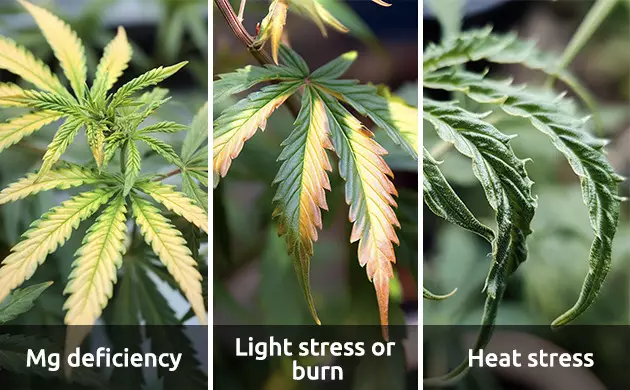
It's common for growers to mistake iron deficiency for calcium or magnesium deficiencies, as these conditions also cause yellowing leaves. However, there are some key differences to watch out for.
Magnesium deficiency usually begins in the lower, older leaves. The yellowing often appears in distinct patches, with the areas between the leaf veins turning yellow, orange, or brown. These affected leaves tend to die off relatively quickly. By contrast, iron-deficient leaves stay yellow but remain on the plant longer, particularly at the top.
Calcium deficiency manifests as necrotic (dead) spots on the leaves, typically on the older, lower leaves. You may also see leaves curling or twisting as the deficiency progresses. With insufficient iron, you won't see these spots; instead, the primary symptom is a uniform yellowing of the newest leaves.
Remember, iron deficiency starts at the top of the plant, whereas most other deficiencies affect the lower leaves first.
How to Deal with Iron Deficiency
Once you’ve determined that your cannabis plant is deficient in iron, you should act quickly. Here's a step-by-step approach to fixing the problem.
Flush Your Plants
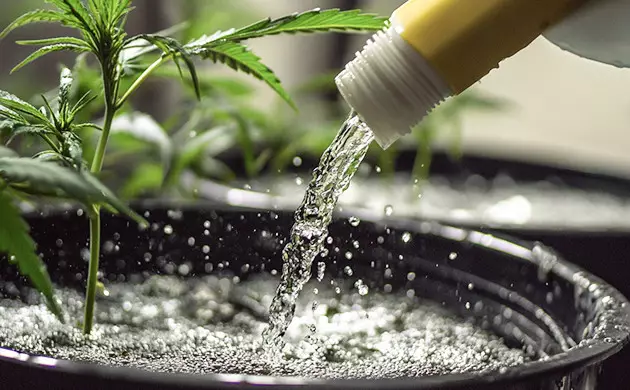
The first step is to flush your plants with pH-adjusted water. If you suspect iron deficiency, flush the medium with water that has a pH of 6.0, which is the optimal level for iron absorption. Flushing cannabis plants will help remove any excess salts or nutrient build-up that might be preventing the plant from absorbing iron. Within a few days, you should see new growth that appears greener and healthier.
Adjust pH Levels
Iron is best absorbed at a pH level between 6.0 and 6.5. Make sure to test the pH of your growing medium regularly and adjust it if necessary. In soil, keeping the pH around 6.5 is ideal, while in hydroponic systems or coco, aim for closer to 6.0.
Add Iron Supplements
If flushing and adjusting the pH doesn’t resolve the issue, you may need to add an iron supplement, such as chelated iron, to your feeding regimen. Chelated iron is more easily absorbed by plants, even when pH levels aren't perfect. In severe cases, foliar feeding with an iron supplement can provide quicker results by delivering iron directly to the leaves.
Remove Damaged Leaves
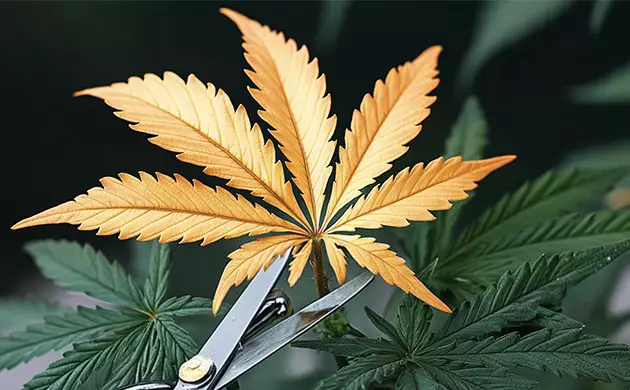
Although damaged leaves won’t recover, trimming them can help the plant focus its energy on producing new, healthy growth. During the vegetative stage, it’s safe to remove all yellowed leaves, but during flowering, be cautious not to over-defoliate, as this can stress the plant.
How Long Does It Take a Plant to Recover from Iron Deficiency?
After you've corrected the iron deficiency, it usually takes about a week to see visible improvements. New growth will emerge green and healthy, while affected yellow leaves may stay discolored but functional. In some cases, leaves that have turned fully yellow can revert to green once the deficiency is addressed. Avoid removing affected leaves too soon unless they are severely damaged.
How to Prevent Iron Deficiency
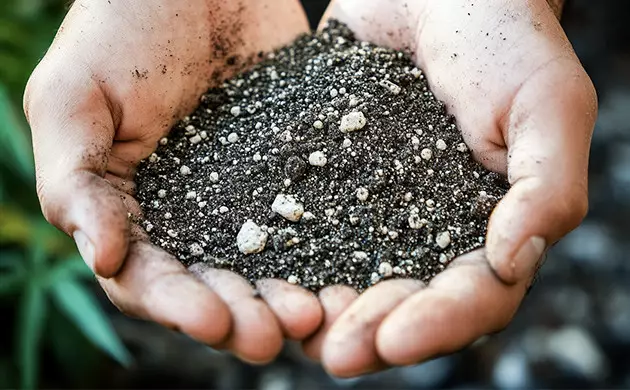
Preventing iron deficiency is all about maintaining a balanced growing environment. Start by using high-quality substrates and nutrient solutions specifically designed for cannabis. These products typically contain all the macro- and micronutrients your plants need, including iron.
Consistently monitor pH levels to prevent nutrient lockout. For those using coco or hydroponics, make sure to supplement with iron-rich nutrients, as these mediums are more prone to deficiencies.
Proper watering is also essential. Ensure the growing medium has good drainage and avoid overwatering, as waterlogged conditions can reduce iron availability to the plant.
Wrap-up
Iron deficiency in cannabis plants is a manageable issue, provided you catch it early and take the necessary steps to address it. By keeping an eye on pH levels, using iron-rich nutrients, and maintaining a balanced growing environment, you can prevent iron insufficiencies from impacting your cannabis yield. Act quickly when you spot the symptoms, and your plants will soon return to their full health, ready to awe you with a bountiful harvest.
Herbies Head Shop expressly refuses to support the use, production, or supply of illegal substances. For more details read our Legal Disclaimer.

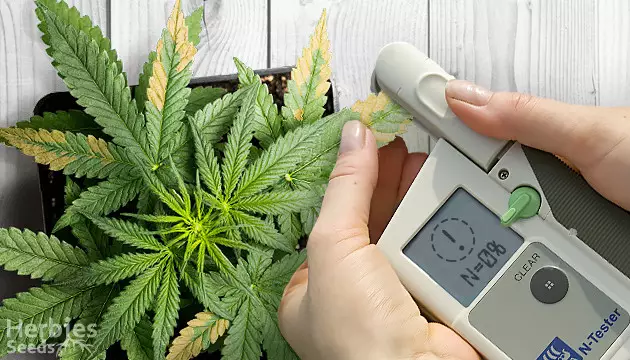
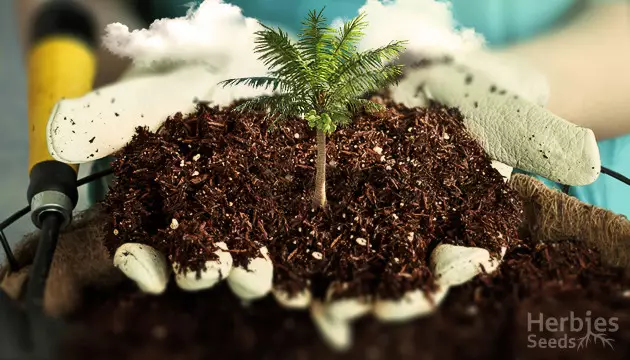


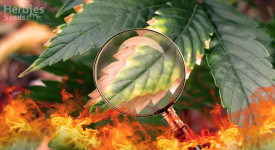
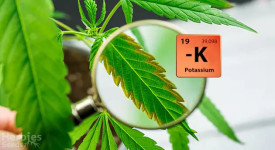
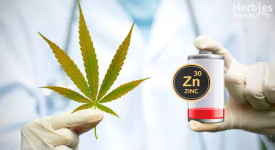
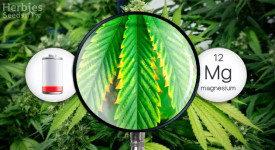
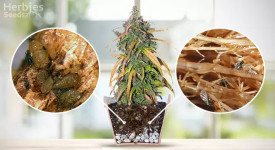
Thank you for leaving a comment for us!
Your feedback will be posted shortly after our moderator checks it.
Please note that we don’t publish reviews that: